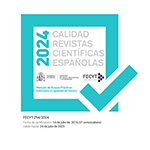Homines fabri. Doppelheld und Parallelstruktur in Max Frischs Homo faber
Résumé
The singular of the novel’s Latin title has not stopped suggesting —even to professional readers— that it refers to Walter Faber exclusively. Johanna Landsberg Piper’s pet name for him, Homo faber, seems to support that interpretation. The word homo, however, primarily meaning a human being, also includes Johanna in this case. She herself, like Walter, is indeed a homo faber, and responsible for her own fate. Consequently, the structure of Max Frisch’s novel is entirely modelled on the pattern of two equivalent protagonists, as this study tries to demonstrate in detail. Major narrative motifs, which have thus far been considered with regard to Walter only, are actually juxtaposed by analogous ones on Johanna’s part. Walter’s changing attitude towards the «American way of life», for example, has its counterpart in Johanna’s penchant for communism —appropriately enough for a novel written and set in the 1950’s. Yet rather than functioning representationally or typologically in the narrative, these motifs prove to be individually conditioned. In both cases, they ostentatiously originate in almost parallel traumatic experiences in the early youths of both Johanna and Walter: the girl’s humiliating defeat (as she perceives it) in the sexually connotative wrestling with her brother; and the boy’s rape by the moribund wife of his math teacher, respectively. The author has made sure that these incidents are positioned in marked and corresponding places according to their significance in the structure of the Homo faber.Téléchargements
##submission.format##
Licence
La Revista de Filología Alemana, para fomentar el intercambio global del conocimiento, facilita el acceso sin restricciones a sus contenidos desde el momento de su publicación en la presente edición electrónica, y por eso es una revista de acceso abierto. Los originales publicados en esta revista son propiedad de la Universidad Complutense de Madrid y es obligatorio citar su procedencia en cualquier reproducción total o parcial. Todos los contenidos se distribuyen bajo una licencia de uso y distribución Creative Commons Reconocimiento 4.0 (CC BY 4.0). Esta circunstancia ha de hacerse constar expresamente de esta forma cuando sea necesario. Puede consultar la versión informativa y el texto legal de la licencia.










